|
Today, we decided to put on arXiv the two long awaited papers about high contrast polarimetry with SPHERE. This work started back in 2014-2015 when Jos was by PhD student and Rob came along for a Diploma internship. 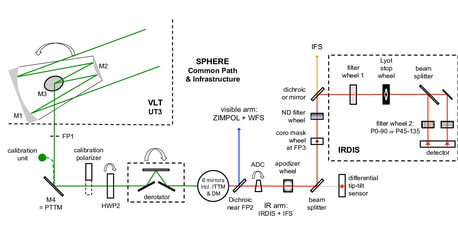 The polarimetric imaging mode of VLT/SPHERE/IRDIS I: Description, data reduction and observing strategy. J. de Boer, M. Langlois, R. G. van Holstein, J. H. Girard, D. Mouillet, A. Vigan, K. Dohlen, F. Snik, C. U. Keller, C. Ginski, D. M. Stam, J. Milli, Z. Wahhaj, M. Kasper, H. M. Schmid, P. Rabou, L. Gluck, E. Hugot, D. Perret, P. Martinez, L. Weber, J. Pragt, J.-F. Sauvage, A. Boccaletti, H. Le Coroller, C. Dominik, T. Henning, E. Lagadec, F. Ménard, M. Turatto, S. Udry, G. Chauvin, M. Feldt, J.-L. Beuzit http://arxiv.org/abs/1909.13107 Context. Polarimetric imaging is one of the most effective techniques for high-Contrast imaging and characterization of protoplanetary disks, and has the potential to be instrumental in characterizing exoplanets. VLT/SPHERE contains the InfraRed Dual-band Imager and Spectrograph (IRDIS) with a dual-beam polarimetric imaging (DPI) mode, which offers the capability to obtain linear polarization images at high Contrast and resolution. Aims. We aim to provide an overview of IRDIS/DPI and study its optical design to improve observing strategies and data reduction. Methods. For H-band observations of TW Hya, we compare two data reduction methods that correct for instrumental polarization effects in different ways: a minimization of the noise image, and a polarimetric-model-based correction method that we present in Paper II of this study. Results. We use observations of TW Hya to illustrate the data reduction. In the images of the protoplanetary disk around this star we detect variability in the polarized intensity and angle of linear polarization with pointing-dependent instrument configuration. We explain these variations as instrumental polarization effects and correct for these effects using our model-based correction method. Conclusions. IRDIS/DPI has proven to be a very successful and productive high-Contrast polarimetric imaging system. However, the instrument performance depends on the specific instrument configuration. We suggest adjustments to future observing strategies to optimize polarimetric efficiency in field tracking mode by avoiding unfavourable derotator angles. We recommend reducing on-sky data with the pipeline called IRDAP that includes the model-based correction method (described in Paper II) to optimally account for the remaining telescope and instrumental polarization effects and to retrieve the true polarization state of the incident light. The polarimetric imaging mode of VLT/SPHERE/IRDIS II: Characterization and correction of instrumental polarization effects. R.G. van Holstein, J.H. Girard, J. de Boer, F. Snik, J. Milli, D.M. Stam, C. Ginski, D. Mouillet, Z. Wahhaj, H.M. Schmid, C.U. Keller, M. Langlois, K. Dohlen, A. Vigan, A. Pohl, M. Carbillet, D. Fantinel, D. Maurel, A. Origné, C. Petit, J. Ramos, F. Rigal, A. Sevin, A. Boccaletti, H. Le Coroller, C. Dominik, T. Henning, E. Lagadec, F. Ménard, M. Turatto, S. Udry, G. Chauvin, M. Feldt, J.-L. Beuzit http://arxiv.org/abs/1909.13108 Context. Circumstellar disks and self-luminous giant exoplanets or companion brown dwarfs can be characterized through direct-imaging polarimetry at near-infrared wavelengths. SPHERE/IRDIS at the Very Large Telescope has the capabilities to perform such measurements, but uncalibrated instrumental polarization effects limit the attainable polarimetric accuracy. Aims. We aim to characterize and correct the instrumental polarization effects of the complete optical system, i.e. the telescope and SPHERE/IRDIS. Methods. We create a detailed Mueller matrix model in the broadband filters Y-, J-, H- and Ks, and calibrate it using measurements with SPHERE's internal light source and observations of two unpolarized stars. We develop a data-reduction method that uses the model to correct for the instrumental polarization effects, and apply it to observations of the circumstellar disk of T Cha. Results. The instrumental polarization is almost exclusively produced by the telescope and SPHERE's first mirror and varies with telescope altitude angle. The crosstalk primarily originates from the image derotator (K-mirror). At some orientations, the derotator causes severe loss of signal (>90% loss in H- and Ks-band) and strongly offsets the angle of linear polarization. With our correction method we reach in all filters a total polarimetric accuracy of <0.1% in the degree of linear polarization and an accuracy of a few degrees in angle of linear polarization. Conclusions. The correction method enables us to accurately measure the polarized intensity and angle of linear polarization of circumstellar disks, and is a vital tool for detecting unresolved (inner) disks and measuring the polarization of substellar companions. We have incorporated the correction method in a highly-automatic end-to-end data-reduction pipeline called IRDAP which is publicly available at https://irdap.readthedocs.io. TOI-503: The first known Brown Dwarf-Am star binary from the TESS mission. (arXiv:190
0 Comments
Attending Blake Pantoja's PhD defense remotely (happening at the Universidad de Chile's Cero Calan) from my office @STScI.
I am very proud and happy to have co-directed Blake's thesis with James Jenkins and sorry not being able to attend in person! His thesis work started when I was working at ESO. Blake was awarded the competitive ESO PhD studentship for a year. He learned all the intricacies of high contrast, direct imaging. Together we made preliminary tests and analysis of a fast pace star hopping with VLT/SPHERE. "SAFARI: Bridging the Gap Between Radial Velocities and Direct Imaging". 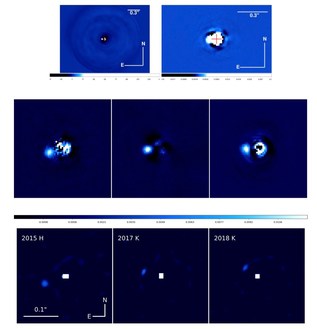 SPHERE dynamical and spectroscopic characterization of HD142527B. R. Claudi, A.-L. Maire, D. Mesa, A. Cheetham, C. Fontanive, R. Gratton, A. Zurlo, H. Avenhaus, T. Bhowmik, B. Biller, A. Boccaletti, M. Bonavita, M. Bonnefoy, E. Cascone, G. Chauvin, A. Delboulbè, S. Desidera, V. D'Orazi, P. Feautrier, M. Feldt, F. Flammini Dotti, J.H. Girard, E. Giro, M. Janson, J. Hagelberg, M. Keppler, T. Kopytova, S. Lacour, A.-M. Lagrange, M. Langlois, J. Lannier, H. Le Coroller, F. Menard, S. Messina, M. Meyer, M. Millward, J. Olofsson, A. Pavlov, S. Peretti, C. Perrot, C. Pinte, J. Pragt, J. Ramos, S. Rochat, L. Rodet, R. Roelfsema, D. Rouan, G. Salter, T. Schmidt, E. Sissa, P. Thebault, S. Udry, A. Vigan http://arxiv.org/abs/1812.07814 We detect the accreting low-mass companion HD142527B at a separation of 73 mas (11.4 au) from the star. No other companions with mass greater than 10 MJ are visible in the field of view of IFS (\sim 100 au centered on the star) or in the IRDIS field of view (\sim 400 au centered on the star). Measurements from IFS, SAM IFS, and IRDIS suggest an M6 spectral type for HD142527B, with an uncertainty of one spectral subtype, compatible with an object of M=0.11 \pm 0.06 MSun and R=0.15 \pm 0.07 RSun. The determination of the mass remains a challenge using contemporary evolutionary models, as they do not account for the energy input due to accretion from infalling material. We consider that the spectral type of the secondary may also be earlier than the type we derived from IFS spectra. From dynamical considerations, we further constrain the mass to 0.26^{+0.16}_{-0.14} MSun , which is consistent with both our spectroscopic analysis and the values reported in the literature. Following previous methods, the lower and upper dynamical mass values correspond to a spectral type between M2.5 and M5.5 for the companion. By fitting the astrometric points, we find the following orbital parameters: a period of P=35-137 yr; an inclination of i=121-130 deg.; , a value of Omega=124-135 deg for the longitude of node, and an 68% confidence interval of \sim 18 - 57 au for the separation at periapsis. Eccentricity and time at periapsis passage exhibit two groups of values: \sim0.2-0.45 and \sim0.45-0.7 for e, and \sim 2015-2020 and \sim2020-2022 for T_0. While these orbital parameters might at first suggest that HD142527B is not the companion responsible for the outer disk truncation, a previous hydrodynamical analysis of this system showed that they are compatible with a companion that is able to produce the large cavity and other observed features. |
Categories
All
Archives
July 2022
|
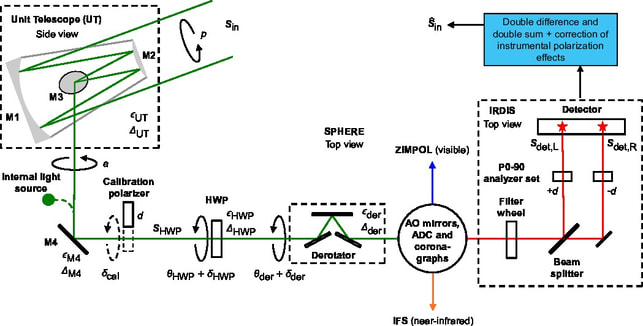
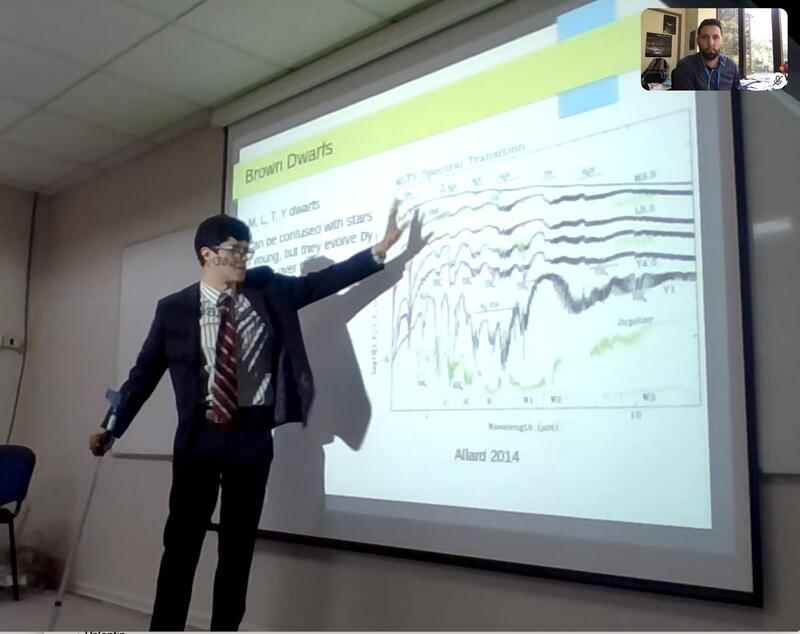

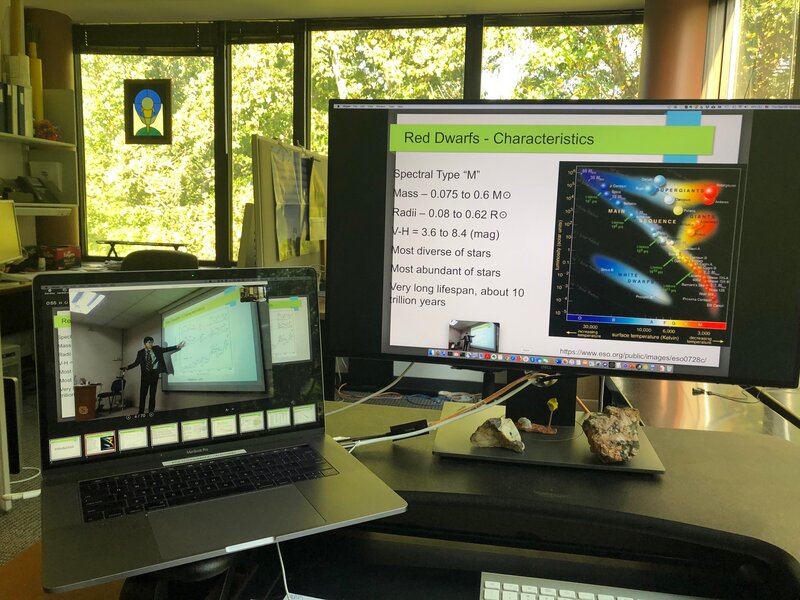
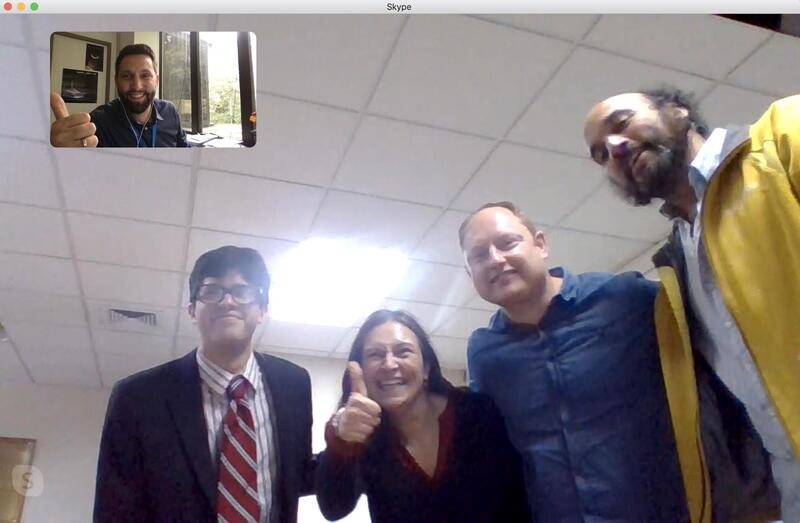
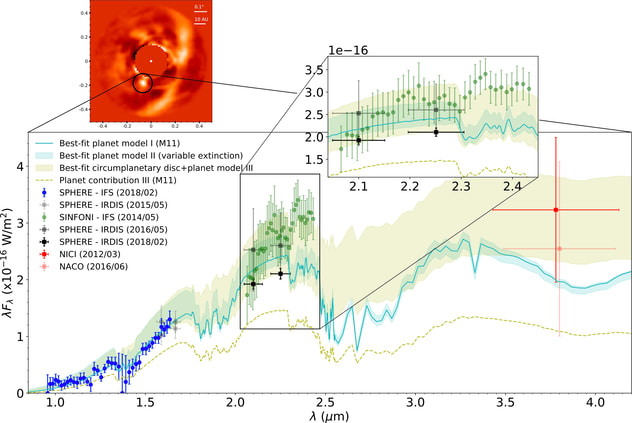
 RSS Feed
RSS Feed
